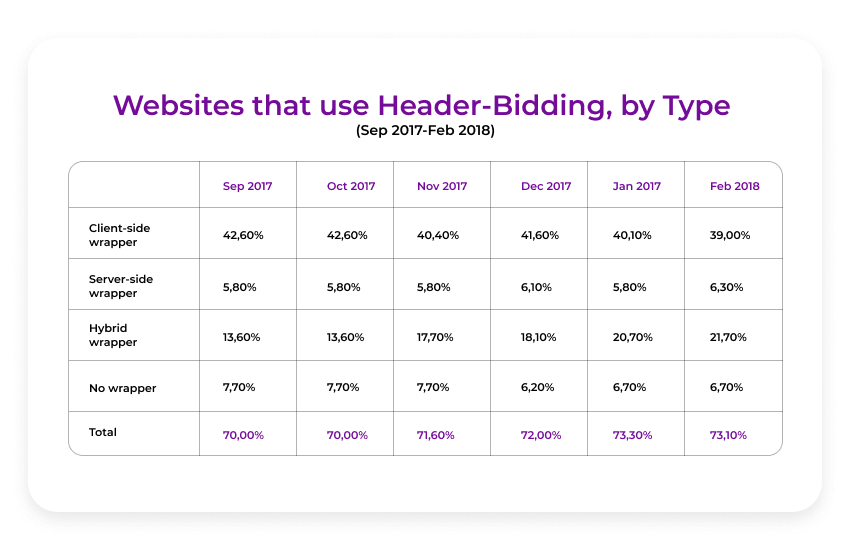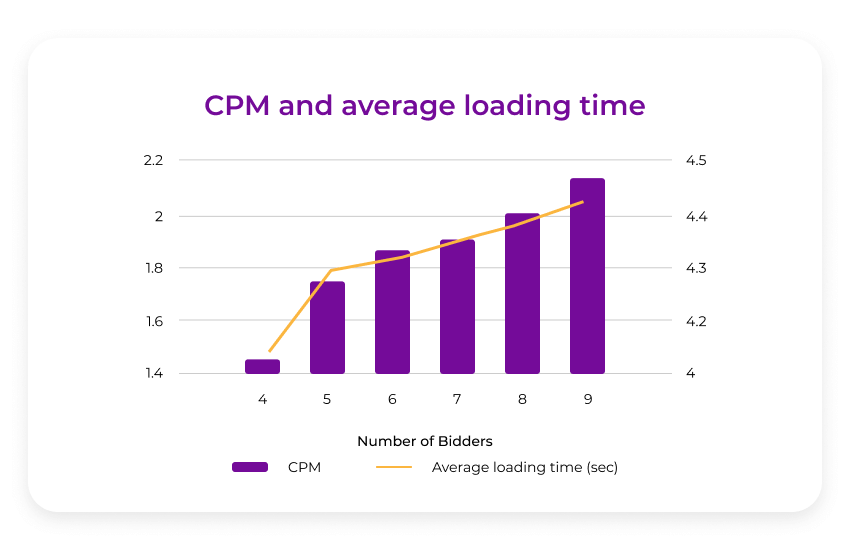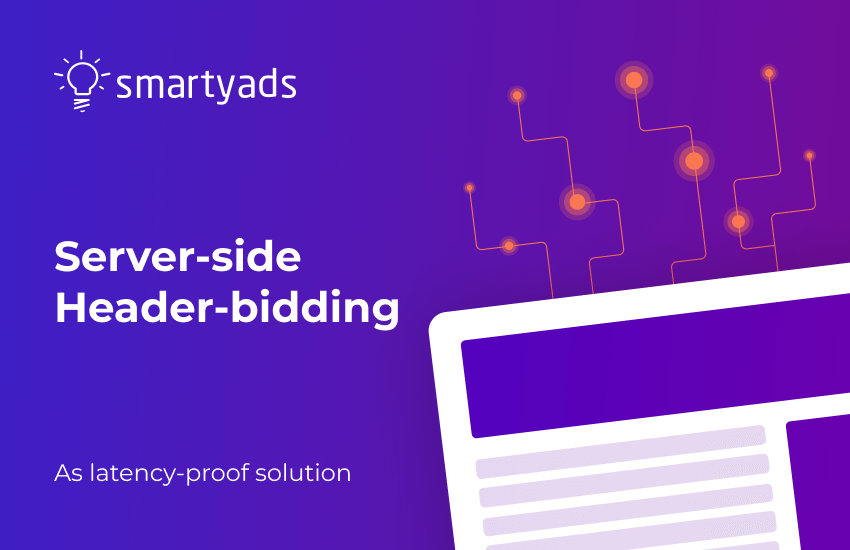Over the past couple of years, there were significant changes made to the header-bidding process which increased the revenue of publishers and elevated user experience. The most important part of these changes included ditching the old waterfall model and transitioning from client-side to server-side bidding. According to Business Insider, about 70% of publishers are already using header-bidding. News/content, communities, utilities, and e-Commerce are those business verticals that apply technology most frequently. Whereas in February 2018 around 39% of publishers were using client-side solution, it is expected that server-side along with hybrid will catch up on the trend by 2020. Before we get into everything that server-side bidding has to offer, let’s get a definition of it.

What is server-side header-bidding
With server-side header-bidding, all of the important header-bidding processes are performed through servers instead of regular browsers. This prevents latency issues and offers a better user experience than client-side bidding.
With client-side bidding, during the first page load, the bid requests are sent through the user’s browser in real-time to all of the ad networks involved. For this to work, many network requests are needed. If it is not set up correctly, it can have a detrimental impact on a page’s performance and decrease the number of bidders involved due to latency. More bidders - higher CPM, but if CPM increases, the latency does too. The following graph demonstrates the dependency.

Server-side header-bidding helps publishers avoid all of this since only one bid request is sent to the ad server which then relays all of the bid requests to all of the bidders involved.
Server-Side header-bidding: benefits for publishers and advertisers
In addition to the benefits already mentioned above, server-side header-bidding offers additional advantages:
- More democratized bidding process - Publishers are constantly trying to get as many advertisers as they can to bid on their content, and server-side bidding allows more buyers to throw their hat into the ring. Otherwise, advertisers would not be interested in remaining inventory leftovers they usually get at the end of the waterfall auction.
- Better fill rate - Since more advertisers are involved, this increases the probability of achieving a higher fill rate. Every impression is auctioned away at the best possible price since all of the bids are compared. This ultimately leads to more revenue for the publishers.
- Increased transparency - All of the inventory is auctioned on a per-impression basis and publishers can monitor the ad transaction figures of each impression sold. This also makes it more convenient for advertisers to make sure that an impression was sold and the ad was served.
- Better auction management - The header-bidding wrapper, is a Javascript tag located on the publisher's webpage that makes unsynchronized calls to demand partners, allows you to better organize all of the bidders involved and set up rules for the auction.
What’s in for mobile ecosystem?
Mobile header-bidding gives to all of the participants involved the same chances to win an auction. On a desktop solution, the header-bidding code is integrated inside the browser as opposed to mobile where it is integrated into the software development kit (SDK) either on the client or server-side.
However, with each additional string of code that is installed, the latency will increase as well which is why big publishers choose server-side header-bidding.
Server-Side header-bidding is the Future of Programmatic
Given everything that server-side header-bidding offers, especially the speed, it is safe to say that this technology will become widely adopted for video advertising purposes. Many large publishers are transitioning to server-side header-bidding since it takes a lot of the burden off the shoulders. It is simpler to use, in many cases more efficient, and allows to manage demand partners easily
However, publishers might notice a certain decline in match rates when transitioning to the server environment. This happens because it requires additional cookie sync between vendors since only one vendor collects the bids. In order to attain a balance between user experience and revenue from advertising, publishers should use a hybrid approach. Client-side solutions will remain until universal ID solutions are implemented. You can expect such a hybrid model to dominate in 2019.
In order to fully adopt server-side header-bidding, there needs to be a catalyst that sparks and drives this adoption. The mobile environment might be what we are looking for since it incorporates all of the benefits of server-side and client-side bidding. It will allow publishers to consolidate all of the bidders to make the auction as profitable as possible. The problems posed by SDKs will persist as long as publishers have to add a new SDK each time they add a new partner. Both client-side and server-side header-bidding wrappers can solve this problem.
Once server-side bidding is fully implemented, you can expect machine learning to be employed in tracking deal performances across multiple exchanges in real-time via automated systems. Such a machine learning-driven approach is already implemented in SSP platforms.
SmartyAds offers a server-side header-bidding solution using which publishers can sell inventory to all auction participants simultaneously. It bypasses the traditional waterfall and enhances the value of every single impression. Easily integrate client-side header-bidding with SmartyAds lightweight SDK, register on the SSP, place your inventory, and monetize website content.
